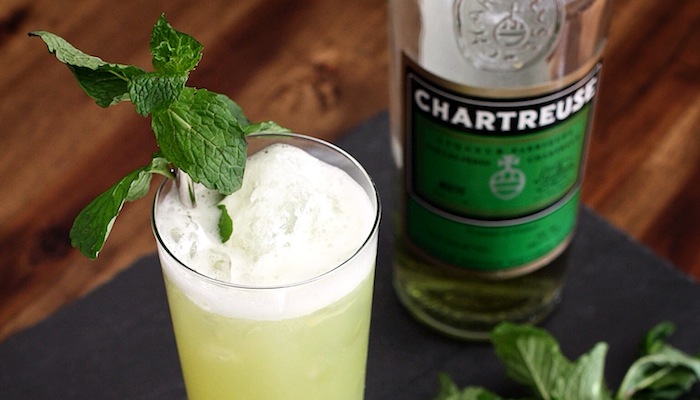Our Endangered Liquors

It’s well known that European monks play an outsized role in the history of alcohol, especially beer and liqueurs. And anyone who knows anything about modern cocktails is well aware of chartreuse, the astoundingly beautiful ingredient that is critical to so many great cocktails, perhaps most notably The Last Word. However, I was unaware that this monk-based liquor is this endangered.
The monks studied and slowly refined the recipe until by 1764 they had a potent (138-proof) Elixir Végétal, which a lone monk, Frère Charles, delivered on mule to nearby towns and villages. In 1840, they formulated a milder, 55 percent alcohol version, Green Chartreuse, and a sweeter, 40 percent Yellow Chartreuse. Both have become popular cocktail ingredients, while the Elixir continues to be sold medicinally for ailments such as indigestion, sore throat and nausea.
Today, the order sells about 1.5 million bottles of its three hallmark products annually, with the yellow and green liqueurs going for about $60, and cask-aged versions for $180 or more. About half its production run is sold in France, with the United States the largest export market.
Royalties go back to 380-some Carthusian monks and nuns residing in 22 charter houses spread across the globe, including Argentina, Brazil, Britain, Germany, Italy, Slovenia, South Korea, Spain and the United States.
Remarkably, among them, only two monks know the full 130-ingredient recipe.
…
This trade secret is both a marketing coup and a potential catastrophe. “I really have no idea what it is I sell,” a Chartreuse Diffusion president told The New Yorker in 1984. “I am very scared always. Only three of the brothers know how to make it — nobody else knows the recipe. And each morning they drive together to the distillery. And they drive a very old car. And they drive it very badly.”
Beyond the two monks who now protect it, all the others — Carthusian or not — involved in the production of Chartreuse know only fragments of the recipe.
Inside the Grande Chartreuse, skilled monks receive, measure and sort 130 unlabeled plants and herbs into giant unmarked (or, in 2020, QR-coded) sacks. Then, at the distillery, five non-Carthusian employees work alongside two white-robed monks to macerate, distill, blend and age the liqueur. A computerized system also allows them to virtually monitor the distilling from the monastery.
Along its five-week distilling process, and throughout the subsequent years of aging, those two monks are also the ones who taste the product and decide when it is ready to bottle and sell. “They are the quality control,” said Emmanuel Delafon, the current C.E.O. of Chartreuse Diffusion.
Allow me to suggest that our monk friends give a copy of the recipe to some top-secret Swiss bank or something so that in the event they drive their car off a mountain road, a la a Steve McQueen or Michael Caine movie, that this most delectable substance survives another 1,000 years.


